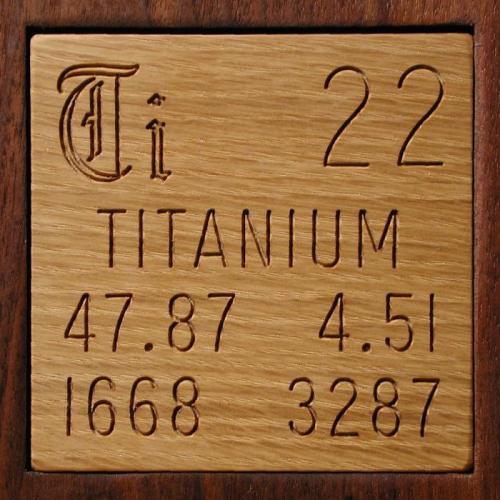Titanium machine screws.
Bored silly with describing titanium samples, I used to have a diversion here describing the difference between a bolt and a machine screw. Well, it turns out my description, based on the type of head and the portion of the shaft that is threaded, was completely and utterly wrong. Alert reader David Cook was kind enough to set me straight quite definitively:No. Actually, the difference between a bolt and screw is based on its application, not appearance. A bolt is used with a nut to produce a clamping force to hold materials together; whereas a screw interlocks threads with the material itself (no nut on the end).
Screws usually have threads all the way up to provide the maximum possible thread-to-thread contact area with the material for maximum holding power. Bolts usually have only enough threads at the tip to attach a nut. But, some bolts also have threads all the way up so that one or more nuts can be installed anywhere.
A screw is perfectly adequate against smaller forces. Humans and machines can easily install screws (no fumbling with a nut). Without a nut, that's one less part to stock and pay for, and one less part to fall off or become lost. Given the large number used, the savings in cost and efficiency make screws an effective solution.
However, against greater forces, the threads in the material are likely to fail and the screw would rip out. Thicker and stronger material would be required to produce strong-enough threads in the material to resist these greater forces. But that would be heavier and more expensive. Instead, a thick, strong nut can be installed to rely on the nut's threads instead of the material's threads. With a nut and a bolt you can use relatively weaker and thinner (usually lighter and less expensive) material.
Your observation that a bolt usually has a hex head or other external-drive is simply because that type of head allows greater force to be applied, which is necessary to achieve the purpose of a bolt. On the other hand, the head of a screw (slotted, Phillips, internal drive) is designed for convenience of installing and removing, rather than great forces. In fact, most screw heads are purposely designed to be torque limiting (the tool slips out) to prevent over-tightening.
In summary, although you may be able to guess at the manufacturer's intended application based on the appearance of the fastener, a bolt or screw is not defined by its appearance, but in how it is used. You can use most screws as bolts, simply by adding nut on the end, and most bolts as screws, simply by tapping (adding threads to) the material.
The nearest analogy I can think of is to select a knife and ask "Is it a kitchen utensil or a weapon?" The manufacturer probably had a particular purpose in mind, and there are certain visible features that would suggest a particular knife is better suited for one application over the other, but what you call it depends on how it is being used. So, now you know, and now I know.
Source: eBay seller e3134
Contributor: Theodore Gray
Acquired: 30 November, 2003
Text Updated: 16 March, 2009
Price: $12/6
Size: 2.5"
Purity: >90%
|
| 
|
|